50 Years in the Making: Centre Clears Rajpura–Mohali Rail Link, Approves Ferozepur–Delhi Vande Bharat
The demand for a direct railway route between Rajpura and Mohali, Punjab had languished in the drawing boards for close to half a century. The Centre lastly provided its approval to the long pending project on Tuesday, declaring a 18 kilometre railway line that will reduce the travelling time between Patiala and Chandigarh, drastically by approximately 66 kilometres. To accompany this long-awaited sanction, the government also gave a clean bill between Ferozepur and Delhi, a new Vande Bharat Express which will help increase connection in the border area of Punjab.
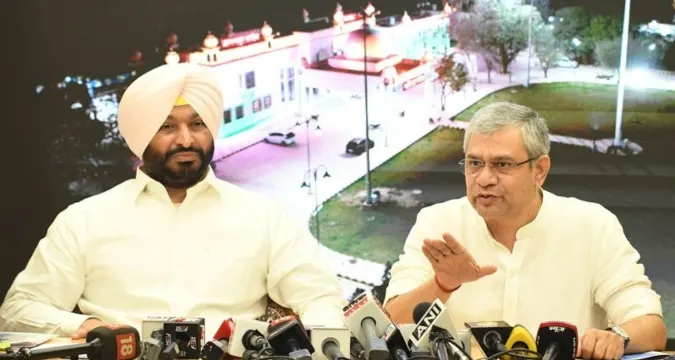
The decisions were announced in New Delhi by Union Railway Minister Ashwini Vaishnaw and Minister of State for Railways Ravneet Singh Bittu, marking what the government described as a “transformational moment for Punjab’s railway infrastructure.”
The Significance of the Rail Link of Rajpura-Mohali.
The proposal to have a direct role between Rajpura-Mohali was first introduced in the Parliament way back in March 1976, yet over the decades of time, it never went further than feasibility reports. Trains traveling between Patiala, Ludhiana, or the Malwa belt currently have to take a diversion at Ambala to congest the Chandigarh route-an added expense of time, traffic and cost in addition.
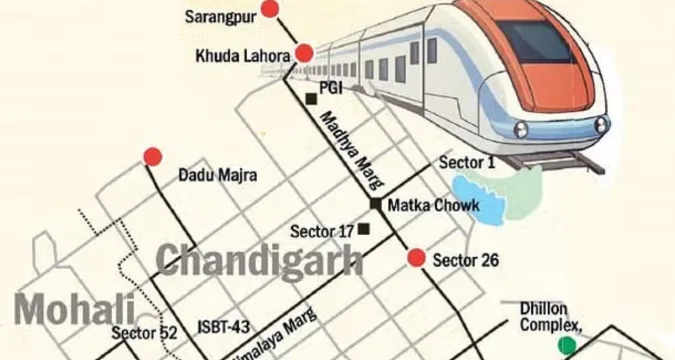
Under the new alignment, trains will either be able to travel Sarai Banjara, instead of going by Ambala, and be attached to Mohali in its entirety. This will not only favor the passengers but also the freight operators who are exposed to the bottlenecks at the overcrowded Rajpura-Ambala route.
Key Benefits Expected:
- Travel Efficiency: Patiala-Chandigarh travel time will decrease by a great deal.
- Decongestion: Load sharing of the Rajpuraambala and Ambala ambala links that experience a heavy daily traffic.
- Industrial Impact: The fertiliser hub of Nangal, the textile base of Patiala and agribusiness hub of Bathinda have faster freight movement, which reduces the cost of logistics.
- Tourism Boost: Easier access to spiritual and heritage sites such as Gurdwara Fatehgarh Sahib, Haveli of Todar Mal and Sanghol Museum.
The project is going to occupy an area of 54 hectares of land in Fatehgarh Sahib, Patiala and Mohali districts. Some officials emphasized that the alignment was calculated to prevent as few as possible cases of agricultural land being acquired, a constant issue in Punjab as farmer unions continue to be an influential player in any given infrastructure development project.
A 443-Crore Rush against Strict Deadlines.
A new rail station at Rajpura-Mohali has been allotted a project budget of 443 crore and this rail link might be closed in two years as suggested by the Railway Ministry, however, there is still a possibility that the three-year schedule may be a reasonable one. The Centre has accepted to meet the whole expense leaving the state government with the burden of fast-tracking land acquisition.
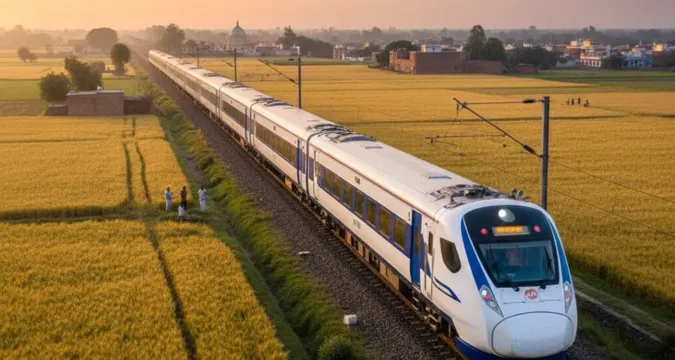
Minister Ravneet Bittu, in his appeal to the Punjab government, said:
“We only need the acquisition of 54 hectares, much of which is not under agriculture. Adequate compensation will be given, and we urge the state and farmer bodies to extend cooperation. This is not just a railway line; it is a 50-year-old dream of Punjab.”
Ferozepur-Delhi Vande Bharat: A Gateway to the Border.
The Centre also gave a clean-up to another Vande Bharat Express, between Ferozepur and Delhi in addition to Rajpura-Mohali project, providing a high speed daily service (except Wednesday).
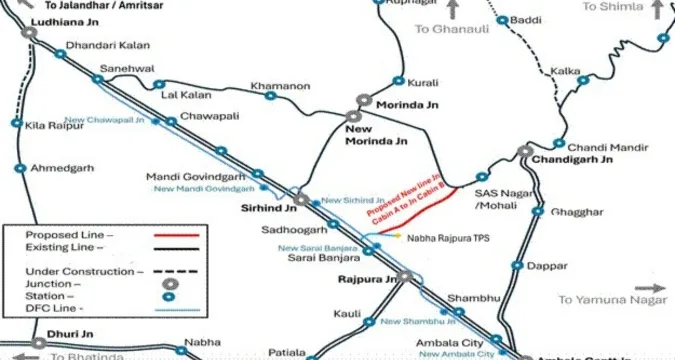
The train that will take 486 kilometres to reach Delhi is scheduled to pass 656 kilometres in total through Faridkot, Bathinda, Dhuri, Patiala, Ambala Cantt, Kurukshetra and Panipat. The line provides a direct economic boost to the constituency of Chief Minister Bhagwant Mann, in the form of Dhuri, and connects the south-western regions of Punjab more effectively to the national capital.
This is particularly important to Ferozepur, which has been a border town traditionally regarded as peripheral in regard to economic planning. The Vande Bharat service will presumably amount to the introduction of new investments into the district and its surrounding areas in the sphere of education, healthcare and small-industry, which is quite susceptible to immediate transport to Delhi and further.
Infrastructure Development in Rail, Punjab.
The announcements are made against the backdrop of the steep increase in the railway allocations to Punjab. Government procurements indicate that whereas in 2009-2014 the budget of the Punjab railway was only Rs 225 crore, it shot to 5,421 crore in 2025-26, implying that according to the Railway Ministry, the central support to the railway is increased by a factor of 25.
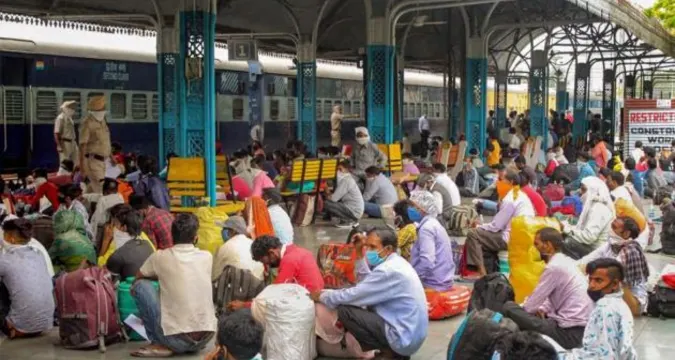
There are approximately 2,200 route kilometers of railway lines in Punjab, although several of them are experiencing congestion problems, including the Ambala-Ludhiana and Ambala-Delhi routes. The link at Rajpura-Mohali will remove part of such pressure whereas the modernization of passenger services is set to take place in the state due to the Ferozepur Vande Bharat.
Extended Implications to the Economy of Punjab.
-
Agricultural Exports
Export of wheat, rice and cotton is dependent on the rail tracks that connect Punjab with Delhi, Kandla and Mumbai. The speeds will make connections faster leading to less delay and competitive connections in the global markets.
-
Industrial Corridors
Punjab needs to stick to freight efficiency with its manufacturing hubs at Patiala, refinery at Bathinda, and industrial welt at Ludhiana. Rajpura-Mohali may enable the reduction of supply chains, mainly in Chandigarh IT and pharma industry that obtains inputs of the Malwa belt.
-
Tourism & Heritage
The heritage sites located in Fatehgarh Sahib and Sanghol have an upside of enhanced accessibility, which could give the area both a chance to attract local and also foreign tourists.
-
Regional Balancing
Not only Chandigarh takes center stage in development, Ferozepur and Bathinda are used to being undermined. The new Vande Bharat service would be having one tool to correct that imbalance because border districts would have a better access point to the national economy.
Political Angle
The relocation of the Centre is also being interpreted on a political front. As the Lok Sabha elections of 2029 are near the horizon, the NDA headed by the BJP is trying to increase its presence in Punjab which has never been the strength of this party relative to the congress and the AAP. The government can use flagging off high visibility projects like a Vande Bharat train and a 50-year-old pending rail link as an opportunity to demonstrate fulfillment of long pending demand.
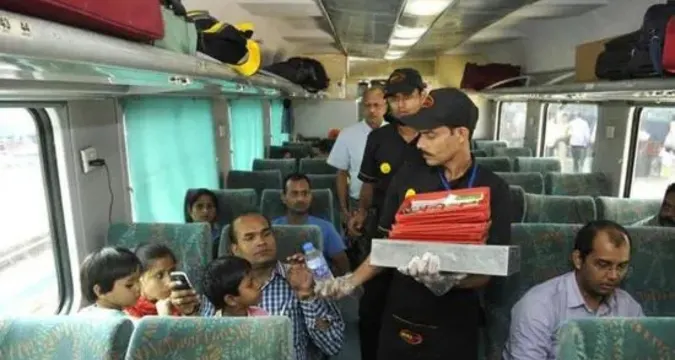
It has also been speculated that Prime Minister Narendra Modi might flag off the Vande Bharat service himself, either on a virtual or physical plane, in underlining the symbolic significance of the project.
Challenges Ahead
- Land Acquisition: This 54 hectares needed is a comparatively small area that might attract some protests against farmers or locals who might be worried about their displacement.
- On time delivery: India Cutting edge Infrastructure in its railway projects has been characterized by delays; the Rajpura-Mohali connection is going to require a lot of political and administrative commitment to remain on track.
- Operational Integration: This will be essential in ensuring a smooth passenger and freight schedule when the link is established as well as in avoiding closures in Mohali and Rajpura junctions.
Conclusion
The ranks of the Centre approving the Rajpura-Mohali rail link is a milestone in the road to the development of railways in Punjab since it took almost 50 years to get the service passed.
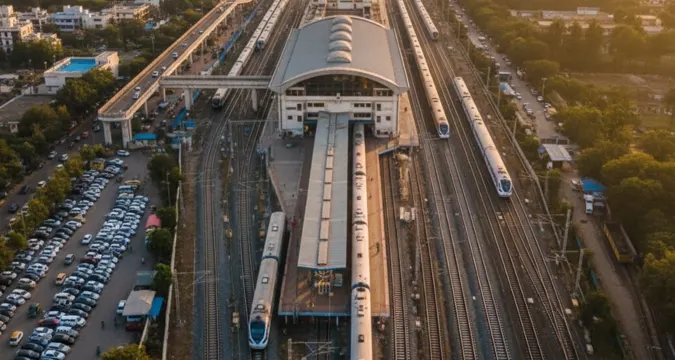
Apart from this, it grants Punjab its first Ferozepur-Delhi Vande Bharat service after 50 years. Provided they are implemented in time, the initiatives can transform travel, commerce, and connectivity throughout the state, and uncover the gaps currently still present after several generations.
To commuters, farmers, industries and border communities of Punjab, the news is not just a report on infrastructure development but it points them to being part of the Indian seamlessly modernizing transport system. The two years to come are going to be the ones to convert these promises into a real world.








